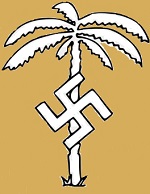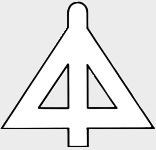Hobby Master HG1404 German Sd. Kfz. 222 Light Armored Car - 15.Panzer Division, Deutsches Afrika Korps, Libya, 1942 (1:48 Scale)
"The peril of the hour moved the British to tremendous exertions, just as always in a moment of extreme danger things can be done which had previously been thought impossible. Mortal danger is an effective antidote for fixed ideas."
- Generalfeldmarschall Erwin Rommel
 The Leichter Panzerspahwagen (German: roughly "Light Armoured Reconnaissance Vehicle") were a series of light four-wheel drive armoured cars produced by Nazi Germany from 1935 to 1944. They were developed by Eisenwerk Weserhatte of Bad Oeynhausen. Chassis were built by Auto Union in Zwickau and assembled by F. Schichau of Elbing and Maschinenfabrik Niedersachsen in Hanover-Linden.
The Leichter Panzerspahwagen (German: roughly "Light Armoured Reconnaissance Vehicle") were a series of light four-wheel drive armoured cars produced by Nazi Germany from 1935 to 1944. They were developed by Eisenwerk Weserhatte of Bad Oeynhausen. Chassis were built by Auto Union in Zwickau and assembled by F. Schichau of Elbing and Maschinenfabrik Niedersachsen in Hanover-Linden.
It used the standard sPkw I Horch 801 (heavy car) chassis with an angled armoured body and turret. The rear mounted engine was a 67 kW (90 hp) Horch 3.5 petrol engine, giving it a road speed of 80 km/h (50 mph) and a cross-country speed of 40 km/h (25 mph). It had a maximum range of 300 km (186 mi).
Used by the reconnaissance battalions (Aufklarungs-Abteilung) of the Panzer divisions, the type performed well enough in countries with good road networks, like those in Western Europe. However, on the Eastern Front and North Africa, this class of vehicle was hampered by its relatively poor off-road performance. In those theaters, it gradually found itself replaced in the reconnaissance role by the Sd. Kfz. 250 half-track. The Sd Kfz 250/9 was the Sdkfz 250 with the same turret as the Sd Kfz 222.
The Sd. Kfz. 222 was examined by Soviet designers before they created the similar BA-64 light armoured car. The front and sides were made of 8 mm (0.3 in) steel; thinner 5 mm (0.2 in) plates protected the top, rear, and bottom. Cast vision ports later replaced ports cut into the armour. The open topped turret was fitted with wire mesh anti-grenade screens.
Pictured here is a 1:48 scale replica of a German Sd. Kfz. 222 Light Armored Car that was attached to the 15.Panzer Division, Deutsches Afrika Korps, then deployed to Libya during 1942.
Sold Out!
Dimensions:
Length: 3-3/4 inches
Width: 1-3/4 inches
Release Date: May 2013
 Historical Account: "Panzers Rollen in Afrika Vor" - The 15.Panzer Division was raised from the 33.Infanterie Division in 1936. It mobilized in 1939, but did not take part in the invasion of Poland. In 1940, it participated in the invasions of Belgium and France. It was then reorganized as the 15.Panzer Division in August 1940 at Darmstadt and Landau by incorporating the 8.Panzer Regiment from the 10.Panzer Division and giving up its 110.Infanterie Regiment to the 112.Infanterie Division.
Historical Account: "Panzers Rollen in Afrika Vor" - The 15.Panzer Division was raised from the 33.Infanterie Division in 1936. It mobilized in 1939, but did not take part in the invasion of Poland. In 1940, it participated in the invasions of Belgium and France. It was then reorganized as the 15.Panzer Division in August 1940 at Darmstadt and Landau by incorporating the 8.Panzer Regiment from the 10.Panzer Division and giving up its 110.Infanterie Regiment to the 112.Infanterie Division.
In April 1941, the division began transport to Libya, joining General Erwin Rommel's Deutsches Afrika Korps (DAK) with the 21.Panzer Division and the 90.Leicht Division. By June 15th, the division was deployed in reserve to the south of Bardia, and fought in the successful defense during Operation Battleaxe at Halfaya Pass.
On November 18th, British forces began Operation Crusader with the objective of relieving the besieged forces at Tobruk. The 15th was situated to the east of Tobruk, and by November 20th they joined the 21.Panzer Division to battle the armored forces of the British XXX Corps.
With the XXX Corps situated on the approaches to Tobruk, Erwin Rommel sent his panzer divisions on a rapid advance to the east, threatening the British rear. However the British continued to advance on Tobruk and by November 27th they had linked up with the fortress. The Axis forces were forced to withdraw.
By December 31st, 1941, Rommel's forces halted at the line at El Agheila for refitting his depleted forces. By January 21st he was ready to advance again, and the DAK and Italian forces began another march to the east.


